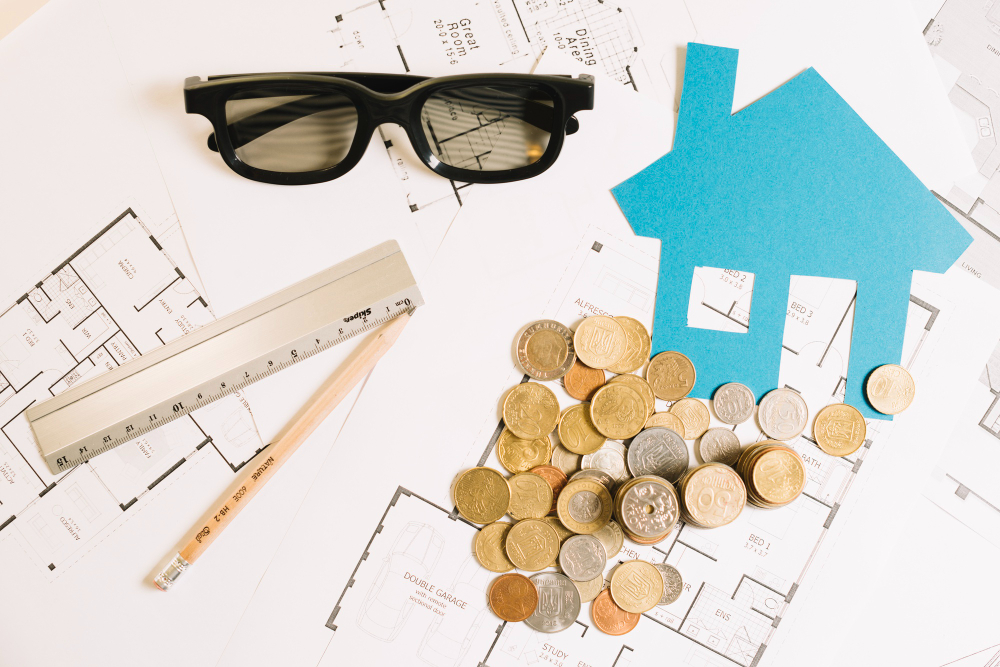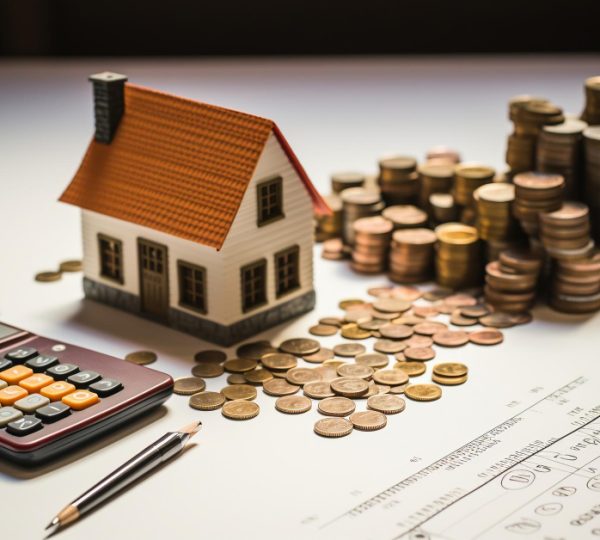Real Estate Market Prediction for Dallas
The Dallas real estate market is frequently referred to as having the best of both worlds: a large city with numerous suburban and rural areas within convenient driving distance; a population increase and plenty of demand, but plenty of room to grow; price inflation and a lot of big-ticket buyers, but a cost base typical of Texas and the remainder of the south that doesn’t get too prohibitive. But will this situation persist in the Dallas-Fort Worth home market forever?

The Dallas-Fort Worth metropolitan area continues to witness increases in rent and property prices even though homebuilders seem to be scaling down their plans for new construction. Consumers are less hopeful than they were at the beginning of 2022.
We’ve gathered the facts you need to understand the market’s present situation utilizing data from the U.S. News Property Market Index. Here are some essential facts concerning the Dallas housing market’s recent history, current state, and projected future until mid-2023.
Dallas’s Housing Market in 2022: Changes
When comparing solitary and multifamily buildings in the Dallas-Fort Worth region, based on statistics from the U.S. Census Bureau, you may believe it’s a tale of two different cities when looking at permits for new residential dwelling construction. Compared to December 2021, 2188 single-family dwelling permits were authorized in the Dallas market in Dec 2022, a 34% drop.
With approximately 6,000 approvals in March 2022, granted permits for single-family houses in the Dallas market hit a five-year high. Since then, the number of licenses has mainly decreased. Seven thousand eighty-eight single-family housing permits were authorized in the last three months of 2022, a 32% decrease from the same period in 2021 when 10,570 single-family dwellings were permitted for building.
In the Dallas market, single-family building predominates in the suburbs since there is land. Additionally, more reasonably priced new construction homes are probably to be found on the outskirts of the urban region.
According to Damon Williamson, senior partner, and principal broker at The Agency in Dallas, “you’re going to be an hour from outside Dallas” if you’re searching for a new home between $300,000 and $600,000. Closer to Dallas’s city center, residential buildings are being placed, although it focuses more on higher-density choices. According to Belinda Epps, broker, and owner of Epps Properties in the Dallas metro region and the MetroTex Association of Realtors’ 2023 president, “you’re seeing the multi-unit type construction and plenty of apartments.”
Construction of multifamily housing is also accelerating in the Dallas region. In December 2022, over 3,102 units of multifamily dwelling permits were authorized, an increase of 86% over the previous year. Compared to the same period in 2021, when tickets were obtained for just under 5,420 units, the last three months of 2022 saw more than 9,291 units granted for construction, a 71% increase.
Housing Demand and Supply in Dallas
Although there are now more houses available on the market than in spring 2022, the supply fell again in December. According to Redfin, there were 2.3 months of available homes in December, which is equal to the national average of 2.3 months and nearly twice as much as in Dallas in December 2021. However, there was a housing supply of roughly 3.12 months in November 2022. The decrease in advertised houses for sale might signal a rebound in purchaser interest, which local real estate agents believe is happening, albeit at a slower rate than that in 2021 and early 2022. In a case where I had numerous bids last week, there were 15, says Williamson. The top request was $70,000 above asking, a cash offer, and it waived all stipulations, he continues, adding that the purchaser he was representing lost the contract.
Though multiple offers for a property still occur approximately 20% of the time, Williamson says that circumstance seems to be more unusual these days. By the U.S. Census Bureau, the vacancy rate for rental homes was 6.6% in December 2022, a decrease of 1.4% from the previous year. The vacancy rate in the Dallas metropolitan region is higher than the overall vacancy rate, which was 5.8% in December.
Focusing on new mortgages, the Mortgage Bankers Association states that as of February 1, 2023, compared to the week before, its annualized Purchase Index declined 10%, suggesting a decline in the volume of mortgage loan applications for new mortgages. The adjusted Purchase Index increased 7% from the prior week while down 41% from year to year. According to the University of Michigan’s Survey of Consumers, consumer confidence in the Dallas market at 59.7 out of 100 in December 2022. Although it is down 10.9 points from the previous year, it is still much better than the national consumers’ sentiment score of just 31.
Dallas’s median home price
According to Redfin statistics, the median price of a property in the Dallas marketplace in December 2022 stood at $402,000, an increase of 5.2% from the previous year. In May 2022, the median price hit a historic high of $463,000; however, most regions of the U.S. also saw historic highs at the same time. Since then, increased interest rates have caused prices to decline. Dallas’ median house price is more than the $388,000 national average home price and is growing faster than the national average. Redfin reports that the average national price has increased by 1.6% since last year. On the other hand, Dallas’ rental market has yet to experience a decline. According to data from Zillow, the typical rental in the Dallas-Fort Worth metro region is around $2,000, an increase of 8% from the previous year.
The average monthly rent in Dallas is about equivalent to the national median rent of $1,981 in December 2022. Demand and development activity, in particular, have an impact on property values in the Dallas market. The Dallas-Fort Worth metro region has around 2.84 million households, based on the U.S. Census Bureau. According to the U.S. Census Bureau’s Construction Price Index, which put the national cost of construction at 193.6 in December, the Dallas area’s construction costs are rising along with those across the country. They will be 15.4% greater in December 2022 than in the same month in 2021.
Mortgage interest rates, of course, have the most significant effect on buyer affordability; according to Freddie Mac, the average rate for a 30-year, fixed-rate mortgage in December was 6.36%. According to Freddie Mac, the average interest rate for a 30-year fixed-rate mortgage has decreased steadily since that time and, as of February 2, was just 6.09%. According to Williamson, rising interest rates and high property prices were the main factors in purchasers deterring themselves from the housing market in the second half of 2022. Monthly payments were speaking louder than anything else; he claims, “the money was speaking more than anything else.”
Dallas’s Employment Trends
According to the U.S. Bureau of Labor Statistics, more than 4.23 million nonfarm workers were working in the Dallas market in December 2022, with a rate of unemployment of only 3.3%. The national unemployment rate was only 3.7% in December, which is low for the entire country, but the Dallas market is doing slightly better. Based on the Bureau of Labor Statistics, there were about 32,600 construction employees in the Dallas area in December, an increase of 2,400 from December 2021.
Foreclosure filings remain below what was before levels, at just 0.3% as of October 2022, according to statistics from Black Knight Inc. High employment numbers in the Dallas-Fort Worth area are keeping mortgage delinquencies and activity in the area low. The foreclosure rate is 0.1% greater than it was in 2021, although it is still far lower than what is regarded as average for the market.
Builder Satisfaction in Dallas Rises, But Barely The National Home Builders Association and Wells Fargo Housing Market Index rated builder satisfaction in the Dallas metro area just 35 out of 100 in December, down 54 points from December 2021 but barely up from the low of 33 it reached in November 2022.
Dallas builders appear to be more optimistic about consumers’ future capacity to acquire new houses, with their confidence level just 31 in December, versus the national homebuilder attitude. Builders are ready to work out a bargain for newly built homes that have already been made. In the Dallas suburbs, according to Epps, homebuilders are lowering their asking prices for finished new construction homes by $20,000 to $30,000. Epps says, “They’re cutting prices to sell the goods.” Epps argues that even if the building doesn’t proceed at the same rate as in 2021 or early 2022, builders in Dallas are more likely to do so than in other regions of the country due to the quantity of demand and the number of people relocating to the area. “Are they beginning construction once more? Yes. Are they doing a lot of construction? No,” she replies.
According to the Architecture Billings Index as from the American Institute of Architects, non-residential building construction in the Dallas region looks to be declining. The index score fell 7.8 points from the previous year to 48.6 in December 2022, continuing to drop from the five-year peak of 61.2 in January 2022.
Predictions for the Dallas real estate market.
A housing market expected to have similar outcomes as we move forward in 2023 is suggested by low unemployment, year-over-year rises in the median house price, and anecdotal evidence, but at a more evenly balanced pace among buyers and sellers than in 2021 and early 2022. However, as we move to the future, there may be some reduction in both supply and demand due to the deterioration in consumer mood and even weaker builder confidence.
Between January and May of this year, more than 20,600 new permits for building single-family homes are expected to be authorized, according to the U.S. News Housing Market Index. However, the anticipated number of dwelling permits in December 2022—3,701—was significantly higher than the actual reported figure—2,188.
According to a considerably more cautious prediction, less than 9,400 multifamily housing unit permits are expected to be issued in the first five months of 2023. It is realistic to anticipate that the actual number of authorized units will exceed the forecast amount given the rising trend in multifamily permits by the end of 2022. Although the Dallas metro area’s population growth and business activity seem to keep demand for housing strong, Epps expects to see some slowdown of price appreciation and a continued steady decline in construction activity. She notes that there is only one practical way to build as quickly as the number of people moving to the area. According to her, the home market activity would continue even if a downturn strikes the U.S. in 2023. “We’re still going to purchase and sell. And we’ll keep on building,” Epps declares.



